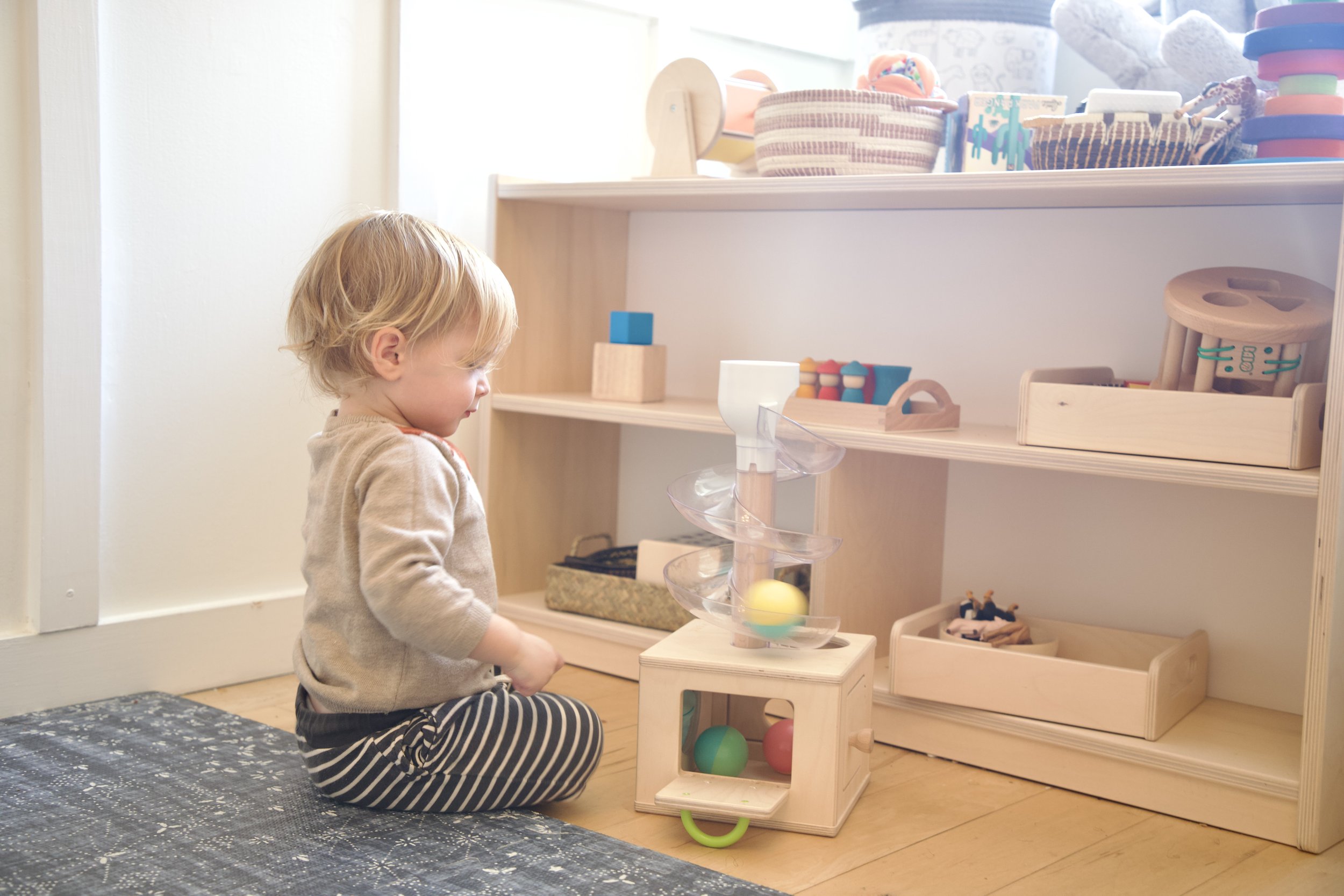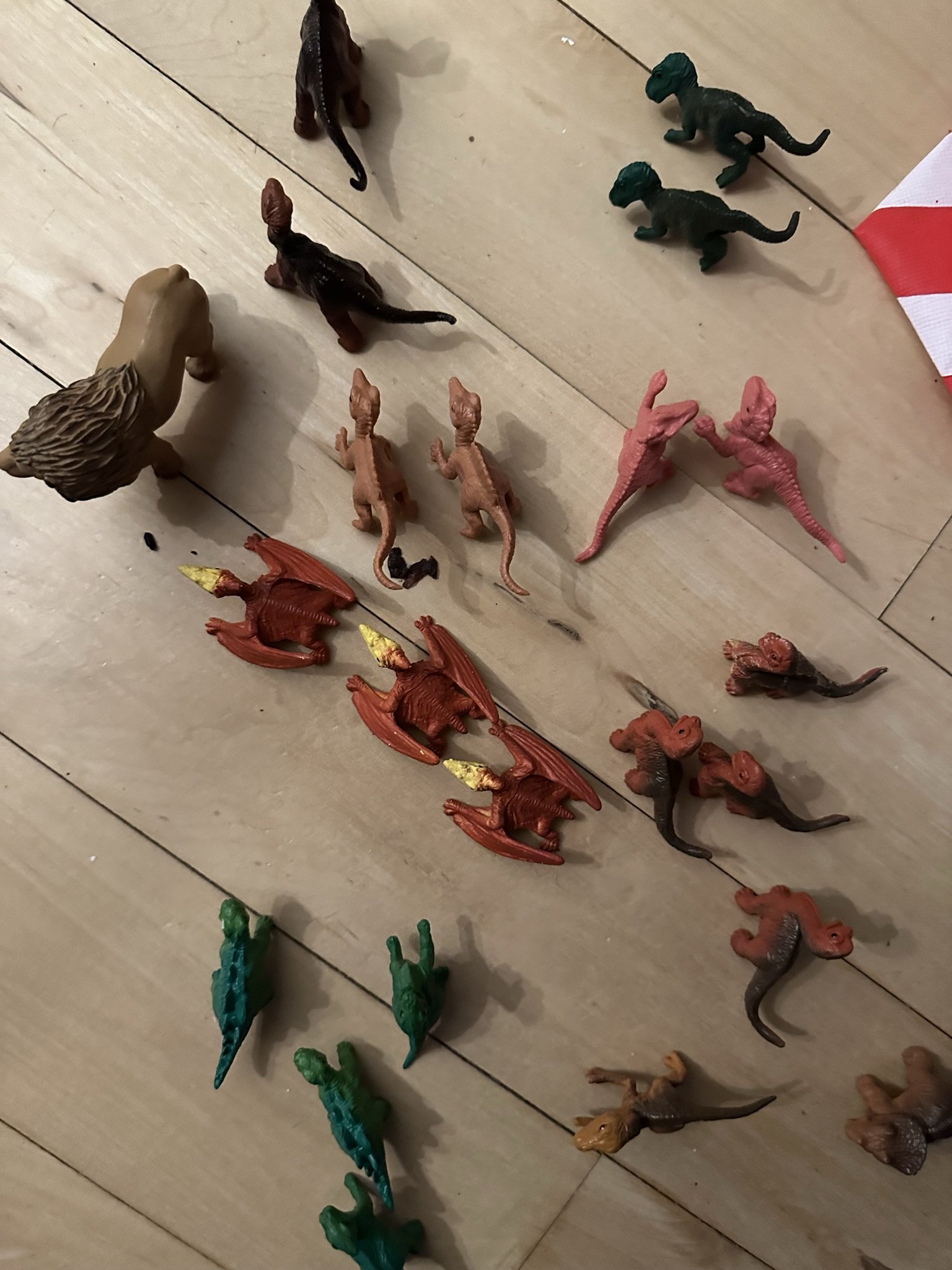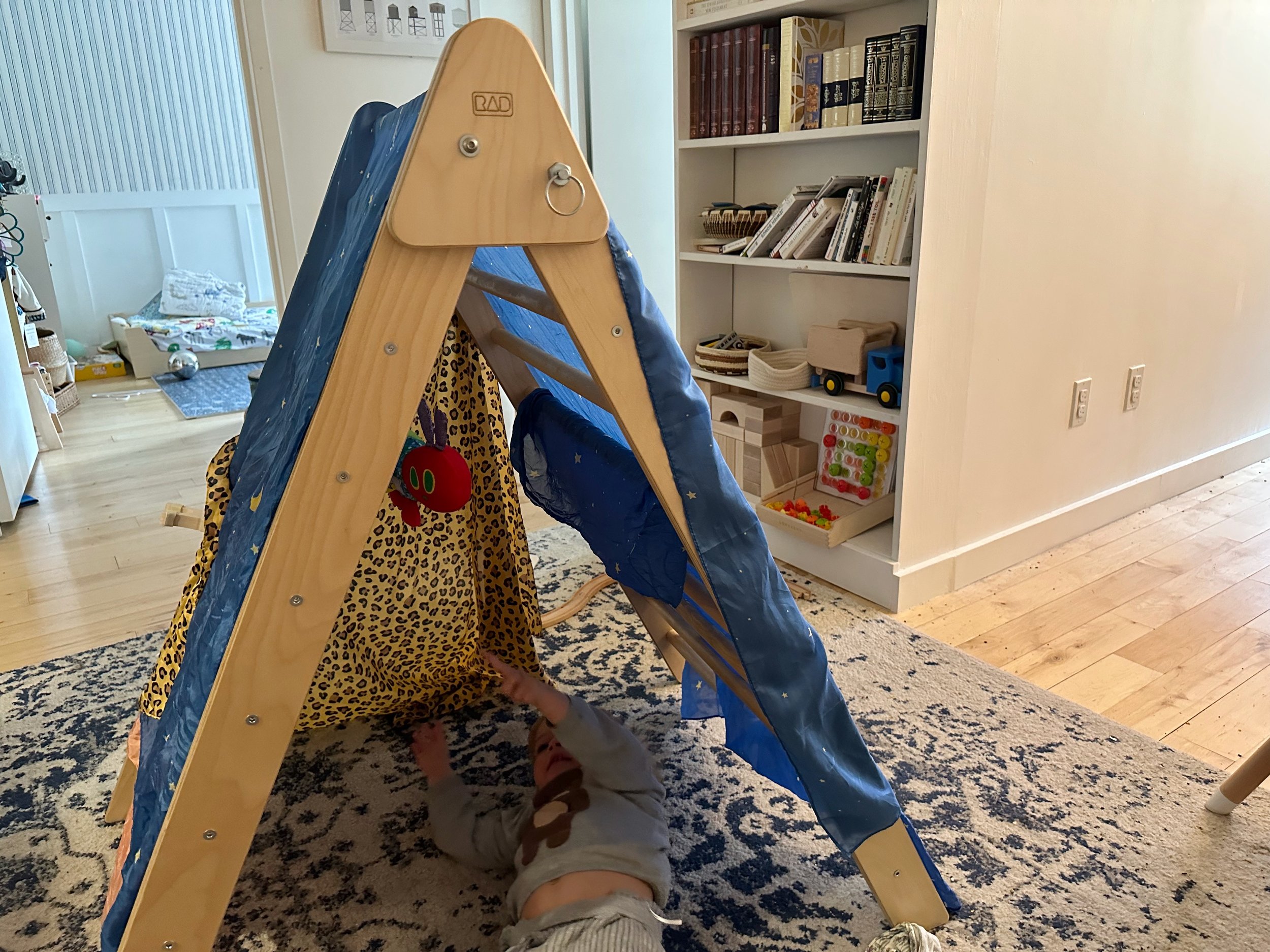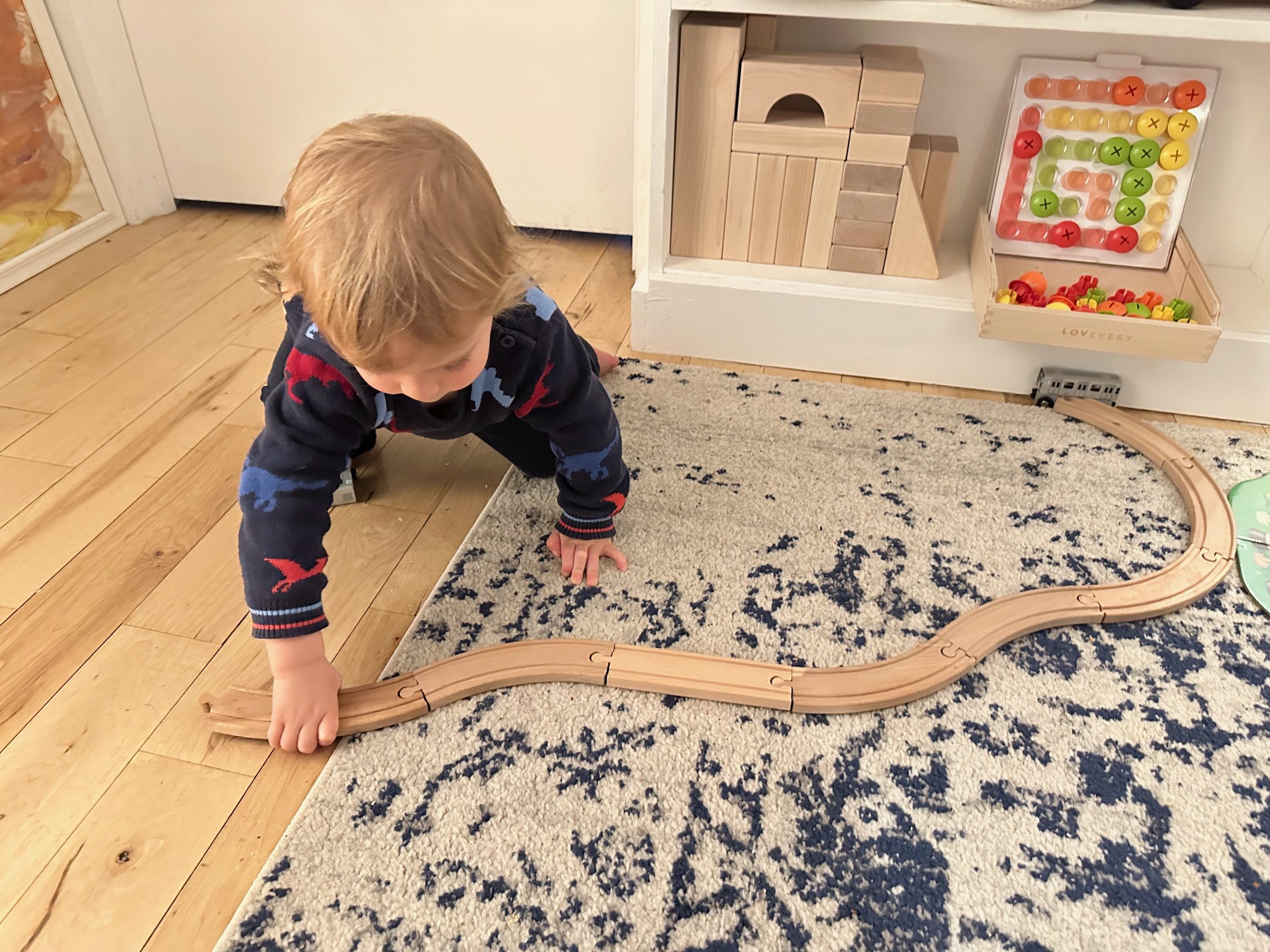Play Schemas in Toddlers
This post may contain affiliate links, which means I may earn a small commission if you buy through my link but does not change your price.
“Play is the work of the child” and it is through play children develop. As toddlers grow and develop, they engage in a variety of play activities that help them learn about the world around them. When we understand their play we can better support our toddlers’ learning and development. One way to understand play better is through understanding play schemas, repetitive patterns of play that help toddlers learn about the world. This blog post discusses the 9 play schemas, how to identify them, and ideas to prepare the environment for each one.
Play schemas are not actually Montessori but they are well aligned with the philosophy. They help us understand our children and their play. They are based on the work on schemas of Jean Piaget, one of the most influential developmental psychologists of the 20th century.
One of the key concepts in Piaget's theory is the idea of schemas. Piaget believed that children construct their understanding of the world through experiences and interactions with their environment. Schemas are the building blocks of this understanding, representing the child's mental structures for organizing and interpreting new information.
What are play schemas?
Play schemas refer to patterns of behavior or actions that toddlers repeat during play. These patterns of behavior are driven by the child's natural curiosity and desire to explore their environment. Toddlers develop a schema or understanding of a particular concept and through experimentation refine that schema. Often caregivers begin to notice play schemas in the toddler years, though some may appear earlier. Often the trajectory schema is the first caregivers notice as children engage in a lot of throwing.
Multiple play schemas can happen at the same time and they can vary greatly in their duration.
There are generally thought to be nine play schemas children engage in. These include: transporting, trajectory, rotation, positioning, connection, enclosure, enveloping, transforming, and orientation. This blog post will give a bit of information on each of the nine play schemas and some ways to support the child during each play schema.
The 9 Play Schemas
Transporting Schema: This play schema involves repeatedly carrying objects from one place to another. Children might carry toys, blocks, or other objects around the room, moving them from one location to another. This type of play helps children to develop their gross motor skills and their understanding of spatial relationships.
Activities:
A wheelbarrow for transporting objects is perfect for the transportation schema
Fill a container with toys or blocks and have your toddler move them from one location to another. Provide tools for transportation such as a wagon, wheelbarrow, bags, doll strollers, and boxes. This is also a great schema for children to engage maximum effort (a Montessori concept referring to the desire of young children to exert their maximum physical strength). Provide heavy objects for moving.
To work on fine motor work, provide small materials to transfer such as beans from one container to another. Provide different transferring materials based on the child’s age. A young toddler may use their hands, a slightly older toddler a spoon, and an older toddler might use tongs.
You can involve the child in practical life with activities such as emptying the dishwasher or putting away the laundry.
Trajectory Schema: This play schema involves repeatedly throwing or dropping objects from a height. They also might be interested in how objects roll down a ramp. The trajectory schema is all about lines and how objects move through space. Children might drop toys from their highchair or throw them down the stairs. They might also jump off things themselves, seeing how they move through space. This type of play helps children to understand the concept of cause and effect, as well as to develop their hand-eye coordination and gross motor skills.
Activities:
Provide your toddler with soft balls or other safe objects that they can throw or drop from a height. Provide a basket for your child to aim the ball into (this can simply be a cardboard box!) or a target such as bowling pins.
You can also create a makeshift ramp with cardboard and have your toddler roll toys down it. Slides also offer great opportunities for rolling toys or cars as well as themselves. Ball runs are also perfect for the trajectory schema.
A simple water sensory bin with pouring options can be perfect as well.
Rotation Schema: This play schema involves repeatedly spinning or turning objects. Children might spin wheels, turn knobs, or rotate objects around in their hands. This type of play helps children to understand concepts such as cause and effect, as well as to develop their fine motor skills.
Activities:
Provide your toddler with wheeled objects and knobs. These spinners are often super fascinating during this schema or gear type toys. This stacker is also perfect for the rotation schema.
Bikes, scooters, and cars are likely interesting during this schema as well.
A salad spinner is a perfect practical life activity during this schema as well as a mixer.
Positioning Schema: This play schema involves repeatedly arranging objects in a particular way. Children might stack blocks, line up toys, or organize objects by color or shape. This type of play helps children to understand concepts such as spatial relationships, size, and shape.
Finding toys lined up and sorted is a sign of the positioning schema
Activities:
Provide your toddler with blocks or other objects that they can stack and arrange in different ways. The Montessori Pink Tower is perfect for the positioning schema, but other stacking toys and stackers work well too.
Sorting is also interesting during this schema so you can provide opportunities to sort by different characteristics such as by color or shape.
Placing dot stickers on lines is a simple and easy activity you can provide for a toddler during the positioning schema. You can also make an animal parade with a blue painter’s tape line your child can place animals on.
Try sorting silverware or setting the table for practical life.
Connection Schema: This play schema involves repeatedly joining objects together. Children might connect blocks, link chains, tie things together, put tops on containers, or snap buttons. I noticed this with my son when he was trying to attach a container top to a circle on his stroller’s wheel. It might also include knocking things down to explore disconnection. This type of play helps children to understand the concept of cause and effect, as well as to develop their fine motor skills.
Activities:
Puzzles are a great material for the connection schema
Provide your toddler with train tracks, LEGOs/Duplos, lincoln logs, magnetic tiles or other building toys that they can snap together to create structures.
Puzzles, including jigsaw puzzles, knobbed puzzles, and 3D puzzles, are also a great option for toddlers interested in connection.
For practical life exploring self dressing including buttons and zippers is great. The Montessori dressing frames are a great place to start there.
Containers with lids are also perfect for the connection schema.
Enclosure Schema: This play schema involves repeatedly enclosing objects in containers. Children might put objects into boxes, baskets, or bags. Or they might put themselves into boxes or cabinets. They might build fences around a toys. This type of play helps children to understand the concept of containment and develop their fine motor skills.
Activities:
Fort building can be fun during the enclosure schema
Provide your toddler with boxes or other containers that they can create structures with and contain objects in.
You can also create a "fort building station" where your toddler can use blankets and pillows to create a cozy fort.
Get a large cardboard box for them to color inside.
For practical life involve them in putting groceries or silverware away.
A coin drop box can also work on fine motor skills while containing or a shape sorter for containment and shape discrimination.
Enveloping Schema: This play schema involves wrapping objects or themselves up. Somewhat similar to the enclosure schema, it is different in that the child or object is fully covered. Children might wrap up toys or other objects, or even wrap themselves up in blankets or towels. This type of play also helps children to understand the concept of containment and develop their fine and gross motor skills.
Activities:
Provide your toddler with a variety of scarves or pieces of fabric that they can wrap around objects or themselves. Play scarves are perfect for the enveloping schema. You can also create a "burrito station" where your toddler can wrap themselves up like a burrito.
Forts can also be great here.
Nesting dolls are also perfect for the enveloping schema.
For practical life, activities such as making crescent rolls that involve enveloping something in dough are fun.
For sensory play, a sensory bin where the child can hide objects in the sensory base or toys frozen in ice to unearth are great for the enveloping schema. Play dough and other materials like that such as kinetic sand can also be fun. Those dino eggs you dig out would be perfect.
Transforming Schema: This play schema involves repeatedly changing the form or appearance of objects or materials. Children might fold paper, mold clay, or cut out shapes. This type of play helps children to develop their creativity and problem-solving skills as well as exploring cause and effect.
Activities:
Provide your toddler with play dough or other materials that they can mold and shape into different forms. Even better- make the play dough together as the dough transforms as you make play dough.
This is the perfect schema for a lot of cooking, particularly making doughs. We love making tortillas together, for example because it is so easy. It also involves a lot of transforming: from flour to dough to a flat tortilla. Cookies and other doughs are also fun.
Art activities where your toddler can mix colors are a great option. For sensory play you can create a water play station with food coloring where your toddler can pour water from one container to another and mix colors.
Orientation Schema: the orientation schema involves an interest in seeing objects from different angles. Children might hang upside down, for example, or look under their legs.
Activities:
gross motor toys such as a Pikler triangle, swings, and a play couch are a great option here. Depending on the child’s age, monkey bars might be of particular interest.
Activities such as toddler yoga can be really fun for a toddler exploring orientation.
You can offer a magnifying glass for another view of the world.
Try a Michelangelo art project and tape paper under a table for them to paint from below.
Train tracks can be perfect for the connection schema
Understanding play schemas can help parents and caregivers better understand their child's play behaviors and provide appropriate toys and activities to support their learning and development. This is why they are particularly well aligned with Montessori. Understanding them allows us to better prepare the environment for our children and provide activities and materials of interest. It can mean offering specific materials during a specific schema or even taking a break from certain materials during a schema (such as glass during the trajectory schema).
Some of the behaviors children might display while exploring a play schema can be frustrating for a caregiver. For example, throwing food off a high chair can be a difficult part of the trajectory schema. These behaviors though are simply the child exploring the world and learning. Understanding play schemas can help us greet them with more compassion. Providing alternative activities can redirect this energy and allow them to learn.
Play schemas are a natural part of a toddler's development and provide opportunities for exploration, creativity, and learning. By recognizing and supporting play schemas, parents and caregivers can provide appropriate toys and activities to support their child's learning and development. Through play, toddlers can develop their problem-solving skills, creativity, and social skills.







